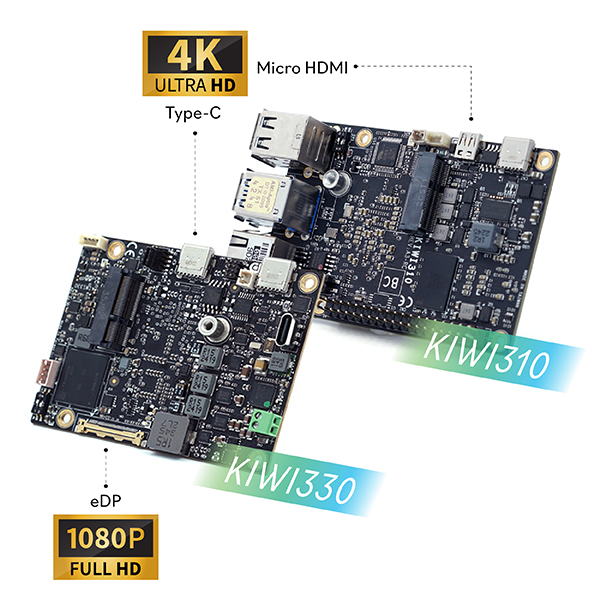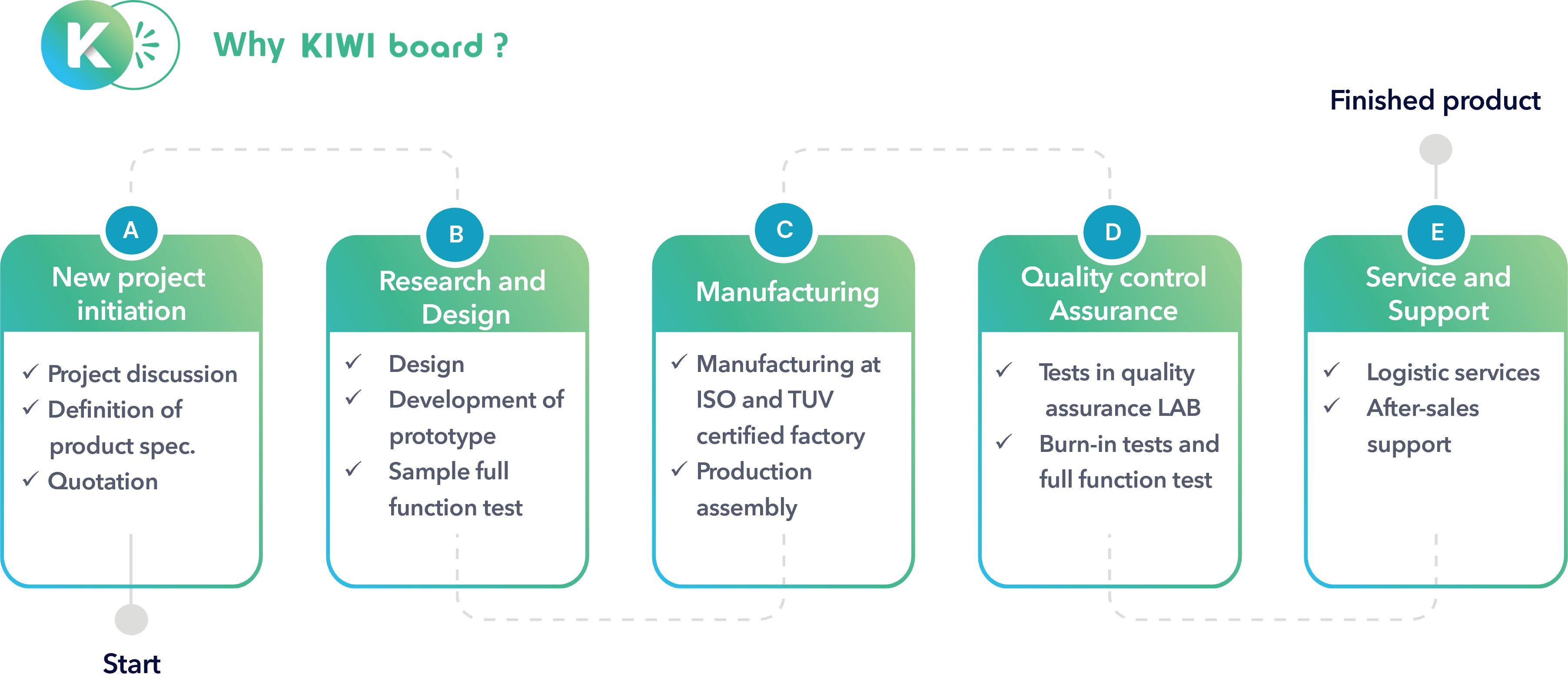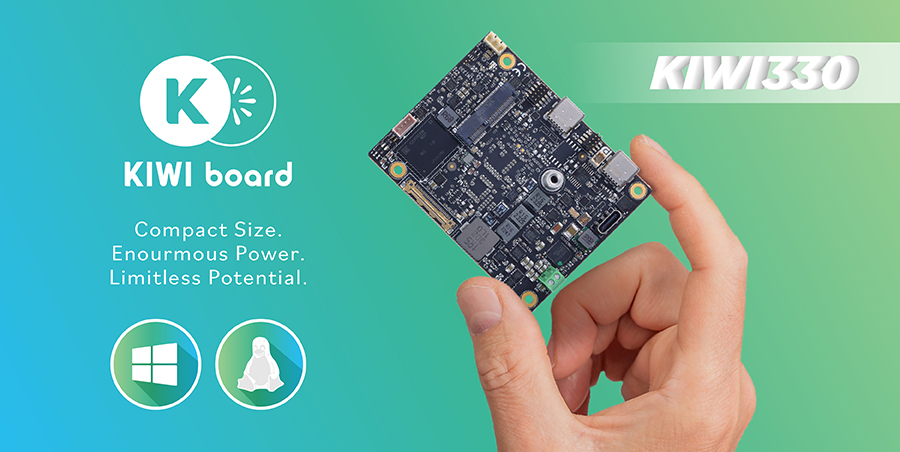
eDP vs DP vs HDMI
The KIWI boards demonstrate that true innovation isn’t measured by size, it’s defined by intelligent design. KIWI330 and KIWI310 boards combine powerful Intel® processors with advanced display interfaces, enabling developers to deliver stunning visuals in compact, energy-efficient systems. Whether used in industrial dashboards, monitors, or AI-edge solutions, these boards transform display connectivity into performance, reliability, and creative freedom.
Understanding the Display Interfaces
Every display connection is built on two foundations: the protocol (how data travels) and the interface (how it connects). The KIWI series uses industry-leading standards VESA DisplayPort (DP / eDP) and HDMI.
- DisplayPort and eDP transmit data as digital packets over differential pairs, offering high bandwidth and resistance to signal noise; a key advantage in industrial environments.
- HDMI, based on TMDS (Transition-Minimized Differential Signaling), carries video and audio together over a single cable, making it perfect for consumer and professional displays.
KIWI330 – Modular Display Power and Multi-Display Freedom
The KIWI330, powered by Intel® Processor N50 and Intel® Atom® x7211RE (Alder Lake-N / Amston Lake), was designed for developers who demand performance, scalability, and control. It supports two independent displays through eDP 1.4a, DP 1.4, and can support HDMI 2.0 (via MIO), offering exceptional versatility in a compact 1.6” form factor.
eDP 1.4a – Embedded Precision
The Embedded DisplayPort (eDP 1.4a) delivers crystal-clear visuals up to 1920 × 1080 at HBR2 link speed. It connects through a 30-pin IPEX-20453-030T-01 header, fully compliant with I-PEX CABLINE II HT1 20143, ensuring secure mechanical retention and outstanding signal integrity.
By using the DisplayPort protocol, eDP supports up to 8.1 Gb/s per lane, along with Adaptive-Sync and Panel Self Refresh (PSR). This embedded connection eliminates bulky cables and external converters, helping developers build thinner devices, lower-EMI designs, and cleaner internal layouts. It’s the perfect match for factory HMIs, monitors, and compact control panels, where every millimeter and milliwatt counts.
DP 1.4 – High-Bandwidth DisplayPort
The KIWI330 supports DisplayPort 1.4 output through its USB Type-C connector using DisplayPort Alt Mode, a technology that allows the Type-C port to transmit native DisplayPort video signals directly without the need for adapters or converters. This integration provides seamless connectivity for external monitors while maintaining a compact design. The high-speed interface delivers 4K UHD resolution at 60 Hz, ensuring sharp, stable, and low-latency video transmission. With its high bandwidth and reliable signal integrity, DP 1.4 Alt Mode is ideal for demanding applications such as AI vision systems, control dashboards, and industrial visualization, where precise, multi-display performance is essential.
HDMI 2.0 via MIO
The KIWI330 supports HDMI 2.0, capable of delivering 4K resolution at 60 Hz through the TMDS digital protocol. This functionality is accessible through the board’s MIO (Modular I/O) type-C connector, which provides a flexible pathway for engineers to design custom MIO expansion boards that bring out the HDMI signal or combine it with other interfaces such as USB, LAN, or serial ports. By integrating HDMI through MIO, developers can freely define port placement, optimize internal layouts, and design compact, space-efficient enclosures. This modular architecture turns the KIWI330 into a highly adaptable platform that can be tailored to each project's specific display requirements.
KIWI310 – Compact, Reliable, and Effortless
If the KIWI330 is about flexibility, the KIWI310 is about pure simplicity. Powered by the Intel® Celeron® N3350 (Apollo Lake) processor, it focuses on reliability and space efficiency for projects that require a single, stable display connection. The KIWI310 includes a Micro HDMI 1.4b port supporting up to 3840 × 2160 at 30 Hz, transmitting both video and audio through a single cable using the TMDS protocol. It’s the perfect “plug-and-play” choice for digital signage, interactive kiosks, or embedded controllers, where ease of setup and dependable 24/7 operation are key.
Built for Real-World Design Freedom
The display architecture of the KIWI series is more than technical; it’s practical. Each interface has a role to play:
-
Micro HDMI 1.4b ensures universal, reliable connectivity in compact projects.
-
eDP 1.4a provides efficient internal integration and cleaner builds.
-
DP 1.4 drives high-resolution external displays for real-time data.
-
HDMI 2.0 via MIO offers modular adaptability for creative system layouts.
Together, they make the KIWI310 and KIWI330 versatile tools for engineers who value precision and flexibility, turning visual design challenges into possibilities.

Compact Design. Clear Vision. Infinite Possibilities
Whether your project calls for a modular display setup or a simple single-screen solution, the KIWI series has you covered. The KIWI330 gives you power, scalability, and flexibility, while the KIWI310 offers simplicity, efficiency, and stability. Both are crafted with KIWI board’s philosophy in mind, Compact Design. Clear Vision. Infinite Possibilities. Because at the edge of innovation, clarity isn’t just what you see; it’s how you design it.
About KIWI Board
KIWI board is a complete solutions provider, supporting every aspect of your project, from hardware to software and system integration, to get your application functioning securely, reliably, and at peak performance. KIWI board builds its products for high reliability, high performance, security, scalability, and versatility so customers can expect extended service life, quickly adapt to evolving system requirements, and adopt future technologies as they emerge.
Next steps
Ready to talk about your projects with a KIWI board expert? Contact us
Want to hear more from KIWI board? for our newsletter Sign up
Or request a quotation







